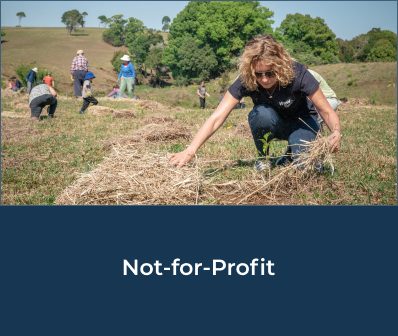Canada’s Deputy Prime Minister and Finance Minister, Chrystia Freeland, unveiled the country’s 2024 federal budget on April 16, 2024. This budget centers around critical tax measures, reflecting a significant shift in fiscal policy. Key highlights include proposed adjustments to capital gains taxation, enhancements to the affordability of housing, and initiatives aimed at promoting a clean economy.
The tax measures outlined in Canada’s 2024 federal budget will have significant implications for both businesses and individuals. We have summarized our observations as detailed below. Changes to Capital Gains Inclusion Rate The capital gains inclusion rate will be increased from 1/2 to 2/3 for capital gains realized on or after June 25, 2024. For individuals, the 1/2 inclusion rate will be available for capital gains realized in the year up to $250,000. The $250,000 threshold will be applied to capital gains realized through a partnership or trust, net of amounts such as current-year capital losses, capital losses of other years applied, and capital gains subject to lifetime capital gains exemption. For the 2024 tax year, transition rules will be introduced to separately identify capital gains and losses realized before and after the effective date. The annual $250,000 threshold for individuals will not be prorated in 2024 and will apply against capital gains realized after June 25, 2024 only. Under the proposal, for an individual at the top marginal tax bracket in Ontario, the first $250,000 of capital gains will be taxed at a combined federal and provincial rate at 26.8% (unchanged). Additional capital gains over and above $250,000 will be taxed at a combined rate at 35.7%. For Canadian-Controlled Private Corporations (“CCPC”), the effective tax rate on capital gains (before any dividend refunds) is expected to increase from 25% to 33%. We expect that the change in inclusion rate will have significant tax and cash-flow implications on current and future transactions such as estate planning, intergenerational business transfers, and M&A activities. Changes to Stock Option Deduction To align with the revised new capital gains inclusion rate, the employee stock option deduction would be reduced from 1/2 to 1/3 of the taxable benefit. On the other side, the taxpayer would be entitled to a deduction of 1/2 of the taxable benefit up to a combined limit of $250,000 for both employee stock options and capital gains. Lifetime Capital Gains Exemption The Lifetime Capital Gains Exemption (LCGE) is set to increase to $1,250,000 applicable to dispositions on or after June 25, 2024. The 2024 LCGE is currently $1,016,836, which would be effective for dispositions prior to or on June 24, 2024. Canadian Entrepreneurs Incentive The budget introduces a new Canadian Entrepreneurs Incentive in an effort to promote entrepreneurship within Canada. This new incentive will allow individual taxpayers to apply a reduced capital gains inclusion rate of 33% on certain dispositions (versus 50% currently, and the proposed rate of 66.7%). This measure will be phased in gradually over 10 years at a rate of $200,000 per year until the maximum of $2,000,000 is reached on Jan. 1, 2034. This incentive would be applicable to dispositions on or after January 1, 2025, that meet certain conditions. Interestingly, these conditions include the taxpayer being a founding investor, having ownership of the shares for at least 5 years, and being actively involved in the business for a minimum of 5 years preceding the disposition. Alternative Minimum Tax The budget indicates the government is proceeding ahead with the previously proposed changes to the Alternative Minimum Tax (AMT) regime and rules. The budget proposes for the inclusion rate of donation tax credits be increased to 80%, from the previously proposed 50%. This is a positive change for individuals engaged in charitable or philanthropic endeavors because it will result in less AMT payable, all else equal. Home Buyer’s Plan The Home Buyers’ Plan (HBP) is a beneficial program that allows eligible Canadians to withdraw money from their Registered Retirement Savings Plans (RRSPs) tax-free to purchase or build a first home, or a home for a disabled individual. Budget 2024 includes a proposal to raise the withdrawal limit under the HBP from $35,000 to $60,000. This increase would apply not only to first-time homebuyers but also to those withdrawing funds to purchase or build a home for a disabled individual. The adjustment aims to provide greater financial flexibility and support for Canadians looking to enter the housing market or assist a disabled family member, reflecting the rising costs of real estate. Budget 2024 also suggests that for those making their first withdrawal between January 1, 2022, and December 31, 2025, the repayment period would now commence in the fifth year following the year of the first withdrawal, instead of the second year under current rules. This amendment aims to provide additional financial relief to new participants during the initial years following their home purchase. Canada Child Benefit The budget proposes an extension of the Canada Child Benefit eligibility period by six months following a child’s death for individuals who would have been eligible to receive the benefit for that child. This change, effective for deaths occurring after 2024, will also apply to the Child Disability Benefit, offering continued financial support during a difficult period for grieving families. Disability Supports Deduction The budget proposes an expansion of the eligible expenses for the Disability Supports Deduction for individuals starting in the 2024 tax year. The deduction assists individuals with impairments by allowing deductions for expenses that help them earn business income, employment income or attend school. Under the new guidelines, the following expenses would qualify for this deduction, provided specific conditions are met:- For those with severe and prolonged impairment in physical functions, expenses such as ergonomic work chairs and bed positioning devices will be deductible.
- For individuals with either physical or mental function impairments, the costs for alternative input devices and digital pen devices will now be eligible.
- Expenses related to navigation devices for individuals with vision impairments will also qualify.
- Costs associated with memory or organizational aids for those with mental function impairments are included.
- Class 44, which includes patents or rights to use patented information for a limited or unlimited time.
- Class 46, which encompasses data network infrastructure equipment and related systems software.
- Class 50, covering general-purpose electronic data-processing equipment and systems software.
- with at least four private apartment units (i.e., a unit with a private kitchen, bathroom, and living areas), or 10 private rooms or suites; and
- in which at least 90 per cent of residential units are held for long-term rental.
- Equipment used to create electricity from solar, wind, or water energy;
- Concentrated solar energy equipment;
- Equipment used to create electricity, or both electricity and heat, from nuclear fission;
- Equipment used for the purpose of producing electricity, or both electricity and heat, solely from geothermal energy;
- Equipment that is part of a system used to produce electricity, or both electricity and heat, from specified waste materials;
- Stationary electricity storage equipment;
- Equipment that is part of an eligible natural gas energy system; and
- Equipment and structures used for the transmission of electricity between provinces and territories.
- Electric vehicle assembly;
- Electric vehicle battery production; and
- Cathode active material production.
- For the fuel charge years from 2019-2020 to 2023-2024, eligible businesses must file their 2023 tax return by July 15, 2024. For subsequent fuel charge years, the tax return must be filed for a taxation year that ends within the calendar year when the fuel charge year begins.
- The corporation must have no more than 499 employees throughout Canada during the calendar year in which the fuel charge year starts.
- the normal reassessment period for any taxation year of the taxpayer and any persons who does not deal at arm’s length with the taxpayer would be extended by the period of time the notice of non-compliance is outstanding.
- The taxpayer Is subject to a penalty of $50 for each day that the notice is outstanding, to a maximum of $25,000.




























